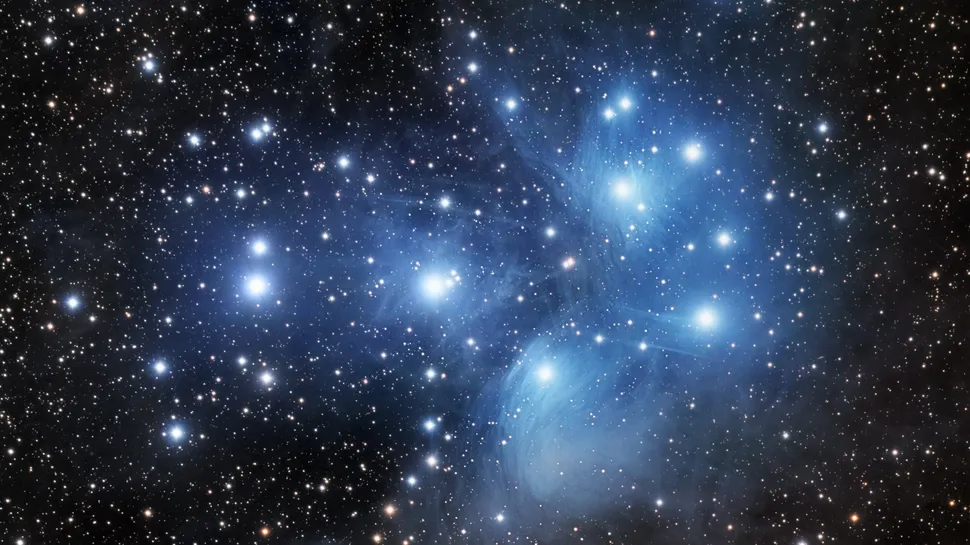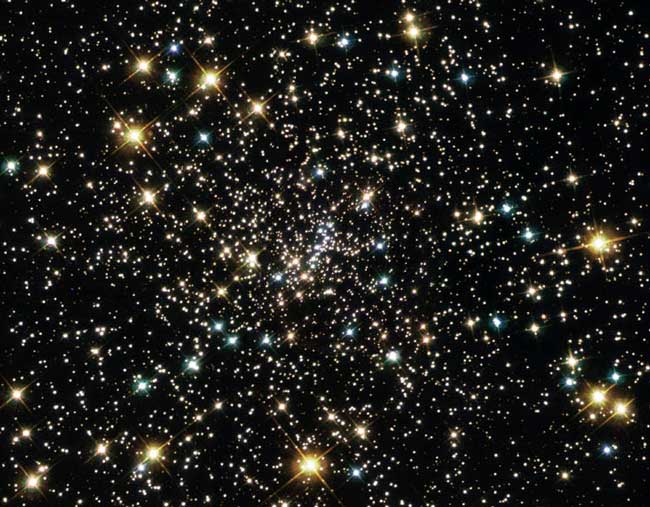Yes, that's a beautiful APOD!

(And big - too big for me to post directly as a picture, so I have to post it as an attachment...

)
Messier 2
Image Credit: ESA/Hubble & NASA, G. Piotto et al.
For me as a blue-loving self-appointed Color Commentator, the sheer number of blue stars in this cluster stands out. So let's take a quick look at what kind of stars we are likely to be seeing in globular clusters, and how the stars of these ancient clusters came to be what they are. But first, let's take a look at the normal evolutionary track of a star of the age, mass and chemical composition of the Sun:
Let's look at what we are seeing in this illustration. At bottom, we see a yellow star on the so-called Main sequence (when stars fuse hydrogen to helium in theri cores). That would be the Sun in its current state. But as the Sun begins to use up its core hydrogen, it will first evolve into the subgiant branch and become a subgiant star. Then, as its core hydrogen supply is really gone, the Sun will become a red giant. It will expand fast and become gigantic in size and very orange in color.
However, as the Sun reaches the top of the Red Giant Branch, its core will have shrunk so much and thus become so much hotter than before that the Sun can suddenly start fusing all the helium that has built up in its core, after it has converted all its core hydrogen to helium. As the Sun starts fusing helium, it will shrink considerably in size and also become "a bit less red", that is, a bit hotter. This stage is called the Red Clump, because so many evolved cool stars are helium-fusing stars at this evolutionary stage. That's because stars of this mass spend a relatively long time fusing helium in their cores, although not nearly as long as they first spent fusing hydrogen.
After the star has fused all its helium into carbon and oxygen, it once again begins to swell and become huge, red and "unsteady", displaying a marked variability. Stars of this mass are unable to fuse carbon and oxygen into heavier element, so this is the end of the road for the one-solar-mass star. It will star shedding its outer layers, baring more and more of its hot core, creating a planetary nebula and turning into a white dwarf. At first the white dwarf is quite bright, but it will soon start fading.
Okay! This is what will happen to stars like the Sun. But the stars in globular cluster M2 are not like the Sun, because their chemical composition is so different. They contain so few elements more massive than hydrogen and helium, compared with the Sun. This gives them a different evolutionary track than stars like the Sun, and it allows them to go through a stage where they become blue:
Note the blue stars at upper left. These are the equivalent of "red clump stars" of so called "metal-poor" stars, stars that contain few elements more massive than hydrogen and helium, compared with the Sun. In other words, these blue stars have used up their core hydrogen and are now fusing helium to carbon and oxygen in their cores. Metal-poor stars shrink so much at this stage and become so much hotter than before that they become blue.
And after these blue metal-poor stars have used up their core helium they too, like the Sun, will evolve into huge red giants (or rather, Asymtotic Giant Branch stars, never mind), and soon they too will have reached the end of the road and die.
But finally, here's my point. We sure see a lot of blue stars in this globular cluster! Then again, if you ask me, this image has probably been processed in such a way as to really bring out the blue - and even the very moderately blue - stars of the cluster. Take a look at this star:
This star is too bright for a blue star to be a member of Messier 2. If you look again at the Color-Magnitude diagram of globular cluster M55, you can see that the blue stars of globular clusters can never be brighter, or even as bright, as the brightest red stars. Therefore this star, which looks brighter than any other star in the cluster, is almost certainly a foreground star (or just possibly a background star, but that is much less likely).
I think I
may have identified the star. It might be TYC 5208-284-1, an F-type star which is just a little bit bluer than the Sun. Funnily enough, the distance to this star is ~700 light-years, versus 55,000 light-years for the globular cluster itself!

Talk about a foreground object!
But as I said, in the APOD this star looks intensely blue, even though it is just a little bit bluer than the Sun (if I have managed to identify it correctly). This means we should be careful when we judge the number of blue stars in this globular.
Ann
 Messier 2
Messier 2











